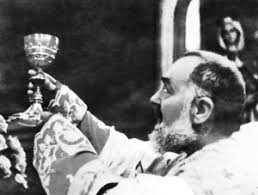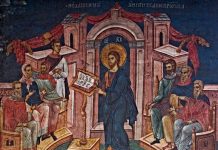CANONIZATION OF ST PIO OF PIETRELCINA, CAPUCHIN PRIEST
HOMILY OF JOHN PAUL II
Sunday, 16 June 2002
1. “For my yoke is easy and my burden light” (Mt 11,30).
Jesus’ words to his disciples, which we just heard, help us to understand the most important message of this solemn celebration. Indeed, in a certain sense, we can consider them as a magnificent summary of the whole life of Padre Pio of Pietrelcina, today proclaimed a saint.
The evangelical image of the “yoke” recalls the many trials that the humble Capuchin of San Giovanni Rotondo had to face. Today we contemplate in him how gentle the “yoke” of Christ is, and how truly light is his burden when it is borne with faithful love. The life and mission of Padre Pio prove that difficulties and sorrows, if accepted out of love, are transformed into a privileged way of holiness, which opens onto the horizons of a greater good, known only to the Lord.
2. “But may I never boast except in the cross of Our Lord Jesus Christ” (Gal 6,14).
Is it not, precisely, the “glory of the Cross” that shines above all in Padre Pio? How timely is the spirituality of the Cross lived by the humble Capuchin of Pietrelcina. Our time needs to rediscover the value of the Cross in order to open the heart to hope.
Throughout his life, he always sought greater conformity with the Crucified, since he was very conscious of having been called to collaborate in a special way in the work of redemption. His holiness cannot be understood without this constant reference to the Cross.
In God’s plan, the Cross constitutes the true instrument of salvation for the whole of humanity and the way clearly offered by the Lord to those who wish to follow him (cf. Mk 16,24). The Holy Franciscan of the Gargano understood this well, when on the Feast of the Assumption in 1914, he wrote: “In order to succeed in reaching our ultimate end we must follow the divine Head, who does not wish to lead the chosen soul on any way other than the one he followed; by that, I say, of abnegation and the Cross” (Epistolario II, p. 155).
(To continue reading, please see here)










